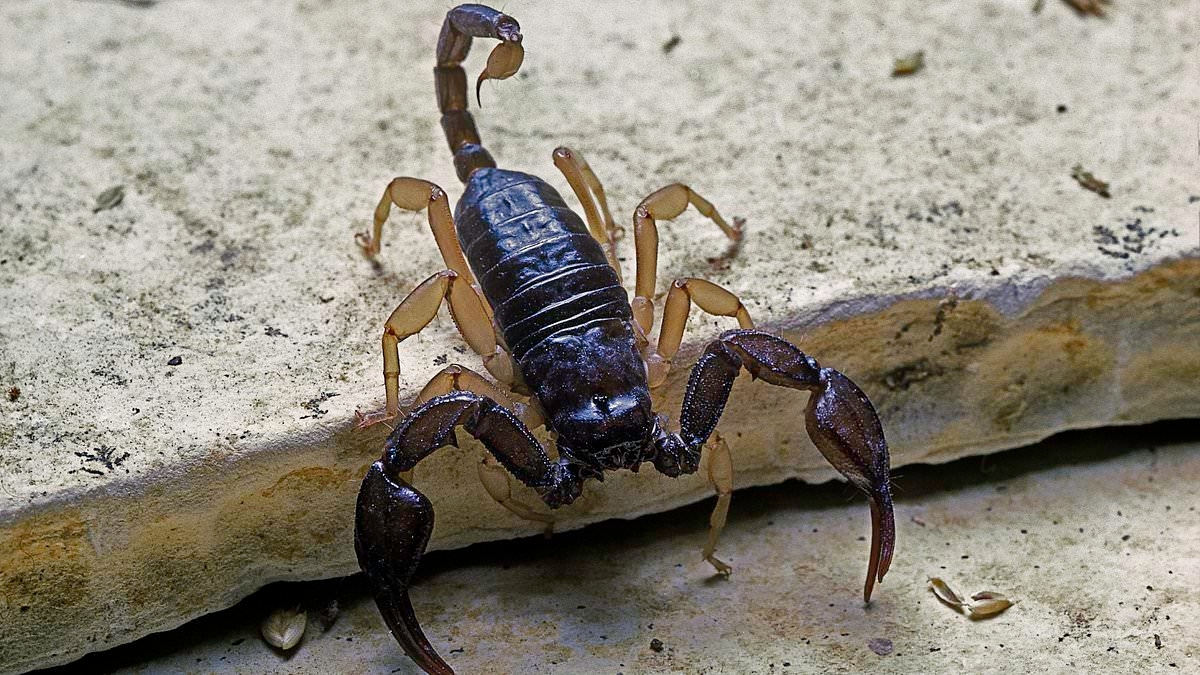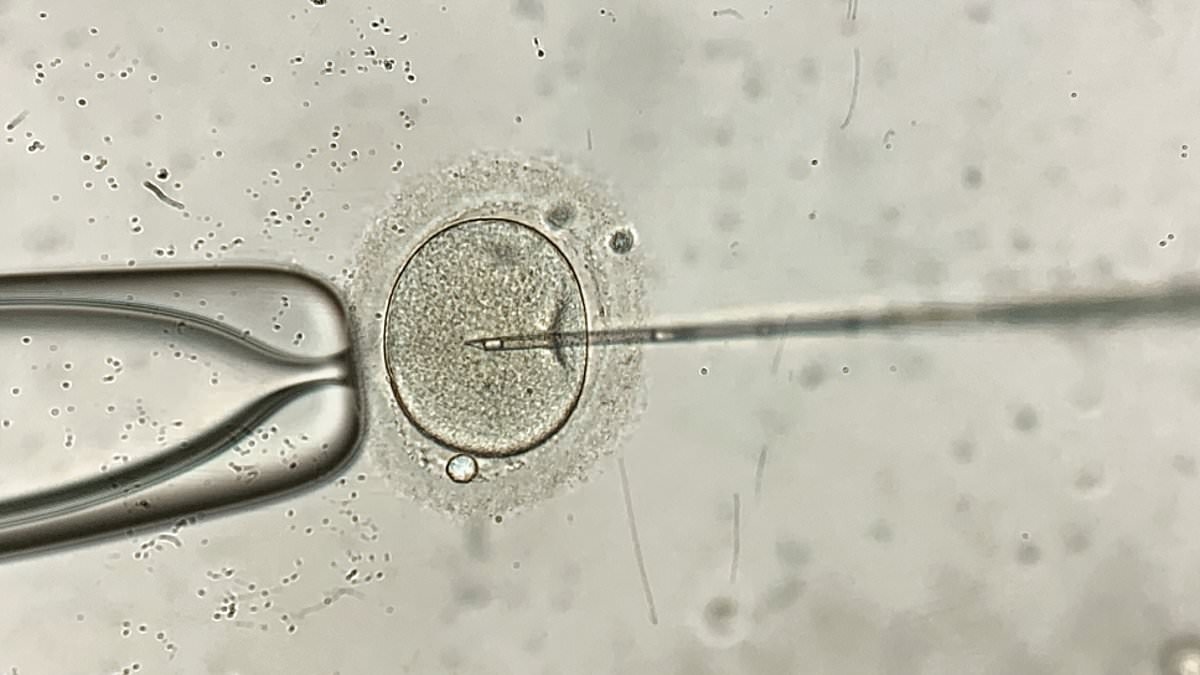Britain's DEADLY critters: Experts reveal the unsuspecting creepy crawlies that can kill you - including horseflies, Asian Hornets, and mosquitoes

Published: | Updated:
When it comes to countries full of deadly critters, Australia, Brazil, or Japan might spring to mind.
But experts have warned that there are surprisingly deadly creepy crawlies right here in the UK.
While it might sound surprising, Britain is home to everything from yellow–tailed scorpions to horseflies – many of which can prove fatal.
What's more, as more invasive species make their homes here in the future, the fatal risks posed by critters could keep getting higher.
The UK doesn't have any creatures with venom strong enough to kill directly, but experts say that biting bugs can still put people in serious danger.
While a murder hornet sting might just be painful for most people, for someone with an allergy, that same dose of venom could be deadly.
However, the biggest threat is not posed by the critters themselves, but by the diseases they carry.
According to the experts, this could make mosquitoes and ticks some of the most dangerous creepy crawlies in the country.
Horse flies are among the unassuming UK insects which could prove deadly. Although they don't have dangerous venom, the flies produce a protein that can trigger fatal allergic reactions
Horse flies, or Haematopota pluvialis, are a species of biting fly which like to feed on the blood of horses and cows.
These painful nuisances don't suck blood like mosquitoes but rather cut into the flesh with their wedge–shaped mouthparts, making them especially painful.
Most of the time, a horse fly bite won't cause anything more than a raised, painful red bump that will fade over a couple of days.
However, when these insects bite, they also release a protein in their saliva that can cause a deadly reaction.
Dr Luke Tilley, of the Royal Entomological Society, told Daily Mail: 'This is not because of a toxic or "deadly" venom, it's an immune system response that affects a small number of people.
'In that sense, it is the allergy, not the insect, that poses the danger.'
In 2013, former rugby player and father of four Andy Batty, 48, died just hours after suffering a massive allergic reaction to a horsefly bite.
Horse fly bites can also lead to dangerous infections. Andrew Kane, 31, died after contracting sepsis from an infected horsefly bite
- Horse flies
- Nobel false widow
- Yellow–tailed scorpion
- Asian hornet
- Ticks
- Mosquitoes
Horsefly bites can also become infected, especially if you scratch at the bite and don't keep it clean.
In most cases, these infections can be treated with antibiotics, but the consequences are occasionally more severe.
Just this month, farm worker Andrew Kane, 31, died after contracting sepsis from an infected horsefly bite.
The Noble false widow is the UK's most venomous spider, and is often branded as the UK's deadliest spider.
In reality, the false widow is not an aggressive species and confirmed accounts of bites are surprisingly uncommon.
Dr Tilley says: 'While it can bite, symptoms are usually mild, comparable to a wasp sting, and serious cases are extremely rare.'
However, that does not mean the noble false widow is entirely undeserving of its dangerous reputation.
The Noble false widow doesn't have deadly venom, but its bites can trigger allergic reactions or lead to dangerous bacterial infections
If bacteria get into the bite, they can spread through the bloodstream, leading to dangerous infections (pictured). In some cases, this can trigger sepsis and even lead to death
Allergic reactions and infections can both lead to much more severe consequences than the spider's venom alone.
According to St John's Ambulance, allergic reactions can lead to difficulty breathing, swelling of the tongue, confusion, and collapse.
There have also been numerous cases of people experiencing severe reactions to supposed spider bites.
In some cases, this has led to people losing parts of their fingers or hands after being bitten.
In 2014, a woman named Patricia Irwin, 60, died after having part of her finger amputated due to a spider bite.
The false widow's venom doesn't cause these 'necrotising' effects, so it is much more likely that these were caused by the wound becoming infected.
It might come as a surprise to learn that the UK is actually home to a venomous species of scorpion.
The European yellow–tailed scorpion, or Euscorpius flavicaudis, is thought to have arrived in the UK in the 1800s with shipments of Italian masonry. Its sting is usually less painful than that of a bee, but it could be dangerous to people with an allergy
The European yellow–tailed scorpion, or Euscorpius flavicaudis, is thought to have arrived in the UK in the 1800s with shipments of Italian masonry.
These stinging arachnids now make their home in a few isolated areas in the southeast of England, particularly around the Sheerness Dockyard on the Isle of Sheppey, Kent, where up to 15,000 currently live.
The yellow–tailed scorpion has a venomous sting that it uses to immobilise prey, but this is also strong enough to pierce human skin.
'Its sting is considered very mild, no more harmful than a bee sting,' says Dr Tilley.
Like all of the UK's venomous creatures, this normally shouldn't be a concern unless you happen to have an allergy to the venom.
There are currently no recorded cases of deaths due to yellow–tailed scorpion stings, but in severe cases, the allergic reaction can be dangerous.
In 2019, a 10–year–old boy was stung in the hand by a yellow–tailed scorpion and subsequently developed neurological symptoms for several days.
This included losing the ability to raise his arm above his head for 72 hours after being stung.
Asian hornets are an invasive species that arrived in France in 2004. The species has now become established in mainland Europe, and nests are found in the UK each year
The Asian Hornet, scientific name Vespa velutina, is an invasive non–native species from Asia.
It is thought to have first arrived in France in 2004, and has since been spreading rapidly, with the first UK sighting in 2016.
It is a highly effective predator of insects, including honey bees and other beneficial species.
Queens grow up to 3cm in length, and workers up to 2.5cm.
It can cause significant losses to colonies, other native species and potentially ecosystems.
The Asian Hornet was accidentally brought to France in 2004 in a shipment of goods from East Asia and has since spread rapidly throughout Europe.
Launching over the channel from France, the UK faces a yearly wave of Asian Hornets arriving in Spring, but has so far prevented this invasive species from establishing itself.
As well as posing a huge threat to our native insect populations, Asian hornets can also be dangerous for people.
Their stings are extremely painful and can trigger severe allergic reactions that can be fatal in vulnerable individuals.
In France, where the insects are much more common, there have been multiple reports of hornets killing people after multiple stings.
Last year, a 77–year–old hiker was killed in Brittany after accidentally disturbing a hornet's nest near a hiking trail and being stung several times.
Reliable data on hornet attacks is extremely scarce, but the local government of Shaanxi province, China, estimated that 42 people were killed between July and October 2013.
An immediately identifiable feature of the Asian Hornet is its bright yellow leg tips compared to the European's brown legs. Note also the distinctive thick black stripes on its body
If these invasive insects become established in Britain, attacks like these could become far more common.
Although they might not be as scary as a giant hornet or scorpion, ticks could be far deadlier than all of these bugs combined.
Ticks, which are found in grassy and wooded areas across the UK, don't have a dangerous bite but can spread potentially dangerous infections.
Professor Heather Ferguson, an infectious disease ecologist from the University of Glasgow, told Daily Mail: 'We have several types of native arthropods in the UK that can spread pathogens that cause disease in people or animals, of varying severity.
'Ticks are responsible for spreading Lyme Disease in the UK, with evidence showing that human cases may be increasing due to climate change.'
Lyme disease is a bacterial infection spread through the saliva of a biting tick.
The most common early symptom is a 'bullseye' rash spreading around the bite and appearing between three and 30 days after infection.
Ticks, which are found in grassy and wooded areas across the UK, don't have a dangerous bite but can spread potentially dangerous infections
Ticks spread Lyme Disease, a bacterial infection which begins as a rash but can lead to fever, fatigue, nausea, pain, and facial drooping
Zika
- Zika usually causes mild fever symptoms and a rash in most healthy people.
Dengue fever
- Dengue is very common in parts of Africa, Asia, and the Caribbean. The infection causes high temperatures, headaches, and a blotchy rash
Chikungunya
- Caused by the chikungunya virus, this infection causes fever and severe joint pain, which can be debilitating.
Other symptoms include fever, headache, fatigue, nerve pain, numbness and, in some cases, facial drooping.
While deaths due to Lyme Disease are rare, fatal complications are possible and severe cases can lead to major long–term health consequences.
However, the most dangerous insect in the UK may well be the humble mosquito.
Just like ticks, mosquitoes don't have a dangerous bite but are capable of transmitting dangerous diseases.
For example, Professor Ferguson says that there are three species of mosquito in the UK capable of transmitting malaria.
'Additionally, one of the most common and widespread mosquitoes in the UK – Culex pipiens – is known to transmit emerging viruses that can infect humans and animals,' says Professor Ferguson.
For example, this species is implicated in the spread of West Nile Virus in mainland Europe.
The UK Health Security Agency (UKHSA) found eggs belonging to both the Egyptian mosquito (Aedes aegypti) and the tiger mosquito (Aedes albopictus, pictured). These mosquitoes are capable of spreading the Dengue and Chikungunya viruses
Professor Ferguson says that the risk to the public is currently 'very low', but warns that the situation could worsen if action is not taken.
She says: 'The risk of mosquito–borne diseases in many parts of the world, including Europe and parts of the UK, is expected to increase due to climate change.'
As the country warms, it will become a more suitable home for mosquitoes and the diseases they spread.
Dengue and Chikungunya virus outbreaks in Southern Europe are due to the invasion of the tiger mosquito, Aedes albopictus.
There is now evidence that this mosquito is moving northwards, and it could arrive in the UK in the coming decades.
Around 20 per cent of people are more prone to mosquito bites.
And while scientists are yet to find a cure, they do have some ideas as to why the insects attack some of us more than others.
Blood type
Certain blood types are more attractive to taste buds of mosquitoes.
Research has shown that people who have Type O blood - the most common blood type - tend to get bitten twice as much as those with Type A. People with Type B blood get bitten somewhere in the middle.
Exercise and metabolism
Working up a sweat during exercise can also make a person more susceptible to a mosquitoes bite.
Strenuous exercise causes higher body temperatures and a buildup of lactic acid, which emit yummy signals to the insects.
Beer
A cold glass of beer makes you sweat and your body release ethanol, which may be why mosquitoes like to land on beer drinkers.
Skin bacteria
Levels of bacteria on the human skin can entice mosquitoes to bite, particularly where bacteria clusters like on the ankles and feet.
Having different types of bacteria on the skin, however, tends to turn the insects off.
Body odour
Mosquitoes use even the faintest of human body odours when searching for potential victims.
It’s been known for some time that female mosquitoes use specific sensors around their mouths to detect carbon dioxide being exhaled from humans and animals.
But a few years ago, researchers from the University of California Riverside discovered the blood-sucking insects also use these same sensors to detect body odours - especially the smell of feet.
Daily Mail





